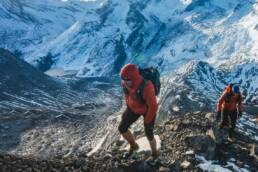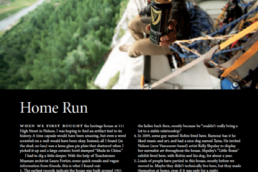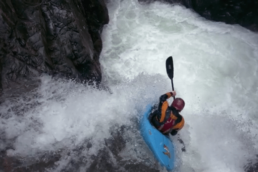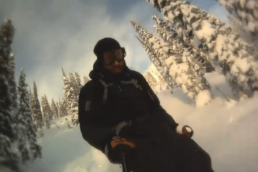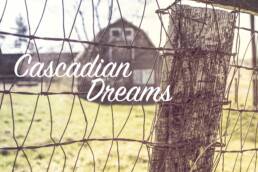Writer David Erickson shares the story of two brothers who braved a route that stretched nearly 1,000 kilometres through scree, snow, mud and all-but-murderous terrain. On foot. Two ultrarunners and a photographer chronicle the state of the Crown Traverse, one of North America’s largest intact ecosystems.
On September 15, 2015, professional distance runners Mike Wolfe and Mike Foote, along with photographer Steven Gnam, started jogging casually through Missoula, Montana. It might have seemed like no big deal, except after they dropped off Wolfe’s kid at day care, they just kept running, for 24 days, in the direction of north. While Gnam had to sit part of the trip out due to shin splints, Foote and Wolfe ran for nine hours a day, every day, until they reached Banff, Alberta, on October 9. It was a first-of-its-kind journey that made waves across the weird world of high-elevation ultrarunning.
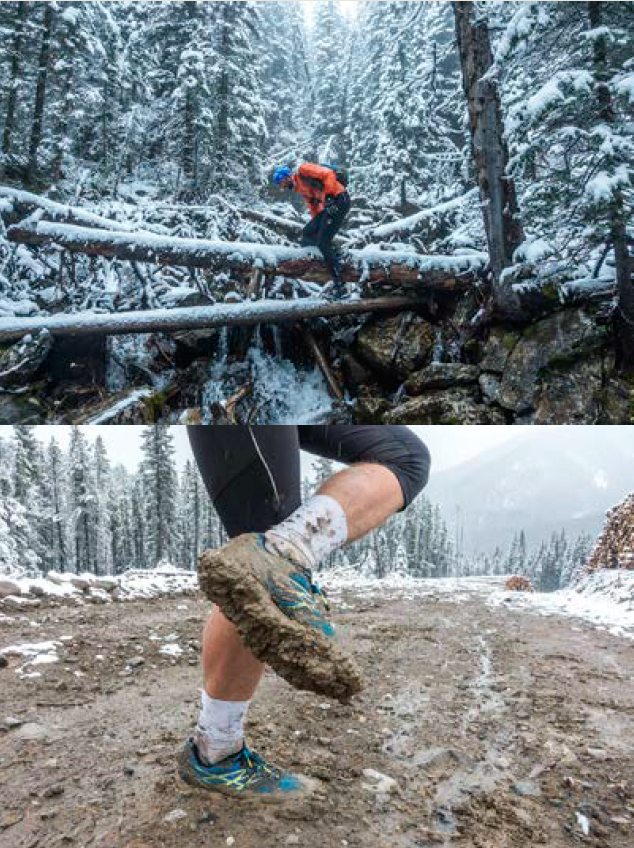
The Montana-based trio scrambled and navigated ridgelines, forests, rock and ice for 965 kilometres, across some of the most difficult terrain in North America. They dubbed the expedition the “Crown Traverse” because they ran the entire length of the Crown of the Continent—a succession of mountain chains that spans over 18 million acres and is one of the largest remaining intact ecosystems in North America, transected by very few roads.
Foote, 32, Gnam, 30 and Wolfe, 38, are all accomplished athletes, but this journey was about more than just testing the limits of their physical endurance. “We wanted to immerse ourselves on a deeper level,” Foote says. “We want to let people know this is a wild and special landscape and let people learn about it through our eyes.” The expedition’s blog explains, “The future of the Crown of the Continent is being shaped by over 100 government agencies, non-government organizations, and place-based partnerships.” Twenty-one federal, First Nation, provincial, and state agencies manage 83 per cent of lands and resources within the region. County, municipal, and non-governmental officials and private landowners and citizens also weigh in on decisions affecting life in the Crown.”
Despite all the human inputs, though, Wolfe notes that for the duration of the journey, they were running mostly with wolverines. But they stopped seeing signs of wildlife once they hit Canada. “The area around Crowsnest Pass is known to be a pinch point with a lot of open-pit mining,” he says. “There are huge mountainside removal projects, with plumes of dust and smoke, and it kind of looks like Mordor from afar. Part of the trip was experiencing the potential hardships that animals encounter as they migrate through that corridor.”
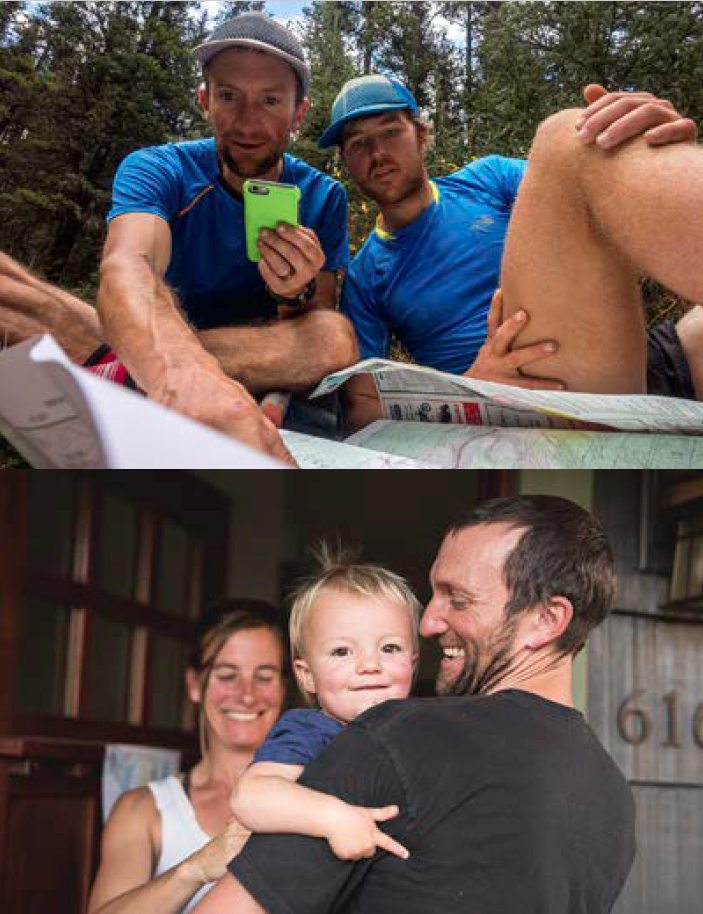
These three bipedal animals, though, were undeterred. Wolfe says that while these bigger mountain traverses that are done entirely while running aren’t common, more runners are attempting them. But about this run, he says, “Nobody has ever done anything like that.”
The trio covered 72 to 80 kilometres on days when they didn’t carry camping gear. A support driver in a van with hot meals and sleeping bags met them intermittently. But for half of the trip they camped with a single, small ultralight tent and freeze-dried food, carrying the gear themselves. In between, they went through five pairs of shoes each. “There were definitely times where I think all of us questioned whether we would be able to do it,” says Wolfe. “In Kananaskis Country, we had a few long days where navigation was really challenging, and we were covered in snow and mud, borderline hypothermic, trying to cover as much ground as we could.”
When asked why running nearly 1,000 kilometres was so important to him on a personal level, Wolfe echoes mountaineering legend George Mallory (who was never known to run) almost perfectly: “Maybe there was no reason. Maybe it just felt like the right thing to do. Maybe I’ll never know. Maybe that’s okay.”
Related Stories
Home Run
Where do you find your home?
EVOC North America Ski Team 2012 – by Dendrite Studios
EVOC Sports' North America Ski Team 2012 video is a short film showcasing the mountains around Whistler, BC, and the…
Kayaking The North Shore
This #playwiththebest campaign by Telus is doing a great job of showing the west coast. Love this one of kayaker Ric…
Shambhala & Bass Coast Named Best Festivals in North America
Two British Columbia events have been awarded best festivals by DJ Mag: Bass Coast in Merritt won "Best Boutique…
North Face Week at Baldface
KMC Editor Mitch Scott had the good fortune of shredding 4 of the best days of the year up at Baldface Lodge two weeks…
Should Cascadia Leave North America?
Cascadia. It's not Canada. It's not America. It's ... better? Given the current political climate of soon-to-be "Trump…


